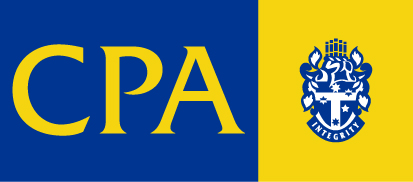We have recently seen a surge in payroll tax audit activity as the state revenue authorities have received data from other sources, including the ATO and ASIC. Here are some traps to look out for.
If you receive an audit letter for your business or a client, it is important to review the payroll tax position and respond within the time frame.
We have set out below some common traps to watch out for.
Trap 1 – assuming the letter from the OSR is correct
Some of the OSR’s audit letters use strong language: “data available to us indicates you should be grouped with other entities for payroll tax purposes”, “we have strong evidence that suggests you should be grouped” and “state and federal agency information indicates a possible discrepancy in your taxable wages”.
The payroll tax provisions are notoriously difficult. Data matching helps the revenue authorities identify a risk, but more work must be done to determine whether there is actually a payroll tax problem.
We have seen multiple cases where the OSR’s data matching has not resulted in grouping or undeclared taxable wages.
Trap 2 – assuming the business’s payroll tax position is OK
We have also seen multiple cases where the OSR’s data matching has revealed a payroll tax problem.
In these cases, there is a very narrow window of opportunity to correct the problem — which can reduce the penalties that are otherwise imposed at 75 per cent of the payroll tax shortfall.
The payroll tax provisions are complicated, and often counterintuitive. Businesses and advisers should consider getting an independent review to see whether they have a problem or not.
Trap 3 – assuming payments to company contractors are not subject to payroll tax
Payments to contractors that are companies are generally not subject to PAYG withholding or compulsory superannuation — however, payroll tax plays by different rules.
Payments to contractors, including companies and trusts, are often “relevant contracts” and therefore subject to payroll tax — unless one of the exemptions applies.
The exemptions have particular conditions in the legislation, but if the services or circumstances fall within one of the following categories, you should check whether that exemption applies. The exemptions are:
- The services are ancillary to the supply or use of the goods.
- The services are not ordinarily required by the business and are performed by someone who ordinarily provides those services to the public generally.
- The services are ordinarily required for less than 180 days in a financial year.
- The services are provided by a person for a period that does not exceed 90 days in a financial year (bearing in mind that any work on a day counts as a whole day).
- The commissioner is satisfied (this often requires an application to the OSR) that the contractor provides the services of that kind to the public generally.
- The contractor has employees or subcontractors (two or more for companies).
- The services are connected to the delivery of goods, where the contractor provides the vehicle.
- The services are in relation to sales of insurance.
- The services are in relation to the door-to-door sale of goods for domestic purposes.
In some cases, an exemption may apply in one financial year, but not the next financial year. To track this, the business should identify all payments to all contractors for the relevant financial years, and then test whether an exemption applies for each contractor for each financial year. We can help with this if requested.
Trap 4 – service entity structures not reporting their income tax positions correctly
The OSR is specifically targeting whether payments to contractors should be subject to payroll tax. The OSR is able to use information from the business’s income tax returns, particularly the label for “contractor expenses”.
We often see service entities, particularly for medical practices, incorrectly report their income because they have misunderstood their structure.
Medical and allied health industry businesses often fall within one of two types of business models:
- An employee or contractor model. In this structure, a practice entity carries on the medical services business and contracts with its patients. The practice entity then separately engages either employees or contractors (or both) to provide the services the practice entity needs to serve its patients.
- A service entity model. In this structure, practitioners carry on their own business and contract with patients directly. The practitioners pay a fee to a services entity for the provision of administration and other support services, and often the right to occupy the premises to carry on their business.
The two models have very different PAYG withholding, superannuation and payroll tax consequences. In some cases, we see documents that incorrectly mix both models: this results in increased tax, superannuation and payroll tax risks. For example, we sometimes see a service entity incorrectly report all of the fees they collect on behalf of their medical practitioners as the service entity’s income, and then report all of the payments remitted to the medical practitioners as “contractor expenses”. This will unnecessarily trigger a payroll tax risk.
We also see cases where what happens in practice (particularly in relation to invoicing) does not match the documents. This also increases the income tax, GST, superannuation and payroll tax risks.
Trap 5 – missing when a business is part of a payroll tax group
For common grouping traps, please see our previous article “Payroll tax grouping – common mistakes to avoid”.
Those issues will continue to be common audit targets through 2021.
I have received a payroll tax letter and I’m not sure if I have a problem — what should I do?
The first step is identifying whether this is a possible payroll tax risk. The second step is responding to the OSR — either that there is no problem (and the reasons why) or that the business has a voluntary disclosure to make.






